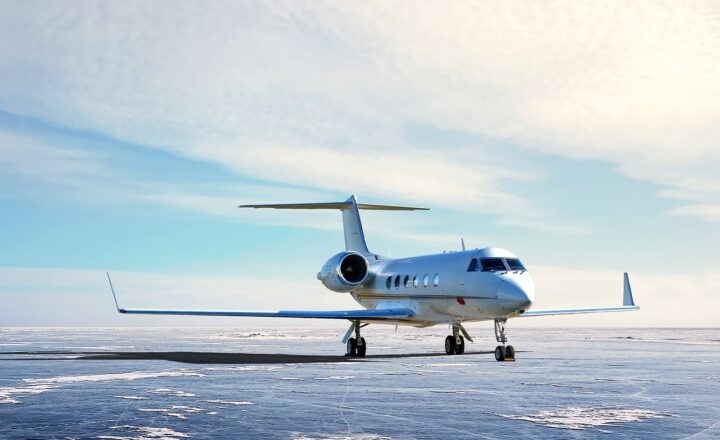The Hidden Costs of Private Jets: What Rich Travelers Pay for Luxury
November 11, 2024

Private jets have long been synonymous with luxury, providing not only an exclusive mode of transport but also an array of unparalleled conveniences. However, while many people may be enchanted by the glamor and convenience of flying private, few are aware of the hidden costs that come along with this elite form of travel.
In this article, we will delve deep into the intricacies of private jet travel, examining the direct costs, indirect financial implications, and the factors influencing the overall expense. Whether you’re a seasoned private flyer or contemplating this luxury for the first time, this guide aims to shed light on the full spectrum of costs involved.
1. Understanding the Direct Costs of Private Jet Travel
Focusing on the direct costs of renting or owning a private jet is a good starting point. Here are some of the main expenses you can expect:
- Aircraft Acquisition Costs: The first significant expenditure is either purchasing a jet or chartering one. Taken together, the price range for a new private jet can be from a few million to over $100 million, depending on the manufacturer, model, and features. If renting, charter costs can vary significantly based on the type of aircraft and duration of the flight. A small jet might cost around $1,200 to $1,500 per flight hour, while larger jets could command rates of $8,000 and beyond.
- Fuel Costs: Fuel is another considerable expense associated with private jet journeys. The cost of fuel can typically range from $500 to $1,000 per hour. Given the average flight duration may cover several hours, this expense can escalate quickly depending on the distance traveled.
- Pilot and Crew Salaries: When flying private, you need to employ pilots and, potentially, cabin crew. Pilot salaries can range from $100,000 to $200,000 annually, and factoring in additional crew salaries will contribute to overall costs. When chartering, these costs are often included in the charter fee, but they are a consideration for ownership.
- Maintenance Costs: Aircraft maintenance and upkeep can be substantial. Owners need to budget for regular inspections, repairs, and necessary upgrades. On average, maintenance might cost around $100,000 to $400,000 annually depending on aircraft usage and condition.
- Insurance Costs: Insuring a private jet can cost approximately $10,000 to $40,000 per year—an expense that many overlook. Costs vary based on aircraft size, type, and personal flight records but represent a mandatory cost of ownership.
Clearly, what begins as a desirable lifestyle investment can quickly become a substantial financial commitment.
2. Indirect Costs: Hidden Fees and Additional Expenses
While direct costs are easily quantifiable, indirect expenses can catch owners and renters off-guard:
- Hangar Fees: Keeping a private jet stored at an airport typically incurs hangar fees, which can amount to thousands of dollars per month. The choice of airport location can further affect costs, especially if it’s a prime location close to urban centers.
- Landing Fees: Airports impose fees on all aircraft that land on their property. These fees can vary widely based on the airport and can be overlooked until the bill arrives. Smaller airports might charge lower fees, but prestigious airports often command premium prices.
- Catering and In-flight Services: Unlike commercial flights, private travel allows for customized dining experiences. While this enhances comfort, it also adds to overall costs. Catering can cost anywhere from $50 to several hundred dollars per person, depending on the meal choices and services requested.
- Baggage and Ground Transportation: Travelers often forget the costs associated with baggage handling and ground transportation. Specialty handling for luggage can incur additional fees, as well as hiring drivers for transportation to and from the airport.
These indirect expenses serve as hidden costs that can add substantial amounts to if not calculated in total travel budgets.
3. The Impact of Flight Time and Distance on Costs
It’s essential to note that the distance and duration of a flight vastly influence cost factors.
Here are a few considerations on how distance plays a crucial role in the cost structure:
- Long-Distance Flights: Longer flights necessitate more fuel consumption and often additional expenses. This adds not only to fuel costs but also to potential overnight stays needed for crew rest and aircraft maintenance checks.
- Short-Haul Flights: Interestingly, short flights may end up being more expensive on a per-mile basis compared to long-haul trips. Although these flights consume less fuel, the costs associated with takeoff and landing—often termed “short flight premiums”—can inflate the total fee.
- Availability of Aircraft: Depending on the time of day, availability can greatly affect charter rates. Traveling at peak hours might incur higher fees. Additionally, repositioning rates may apply if the chartered plane needs to be moved from another location to meet the customer, further inflating costs.
The distance traveled, combined with flight times, introduces significant complexity into the pricing structure, emphasizing the importance of understanding all potential implications.
4. Opportunity Costs: Your Time is Money
Beyond tangible expenditures, the concept of opportunity costs merits attention in private jet expenses. Time saved through private travel offers significant value for many wealthy travelers.
Considering time lost due to check-in, security, and delays in commercial airports, flying privately can alleviate those inconveniences, allowing for more efficient trip management.
However, it’s crucial to evaluate how much one is willing to pay for that time saved. For some, the premium paid for private travel justifies the immediate access and comfort. For others, understanding the actual cost incurred from lost time might lead them toward alternate arrangements.
5. Security and Privacy Measures: A Costly Necessity
An often-overlooked cost regarding private jet travel is the measures taken to secure privacy and enhance passenger safety.
These costs may include:
- Private Security Personnel: Many high-net-worth individuals require security details to accompany them on flights. Not only is hiring a security team costly, but also incurring special arrangements for transportation and accommodations exacerbates these expenses.
- Secure Airports and Facilities: Private jet travelers often require secure airport facilities for arrivals and departures. This may require separate fees for using private terminals, which can add several hundred dollars per instance, depending on the location, thus contributing significantly to the overall cost of travel.
Risk mitigation measures compel wealthy travelers to invest significantly in safety and privacy, driving up somewhat-invisible costs when indulging in jet travel.
6. The Environmental Cost of Private Jets
Finally, it is crucial to reflect on the environmental impact induced by private jet travel. With the rise of eco-conscious consumers, the carbon footprint associated with private flying has come under scrutiny.
On average, private jets release significantly more carbon per passenger compared to commercial flights. While certainly minimizing environmental impacts may not seem like a direct cost, it imposes broader socio-economic implications that wealthy travelers may need to consider, alongside potential financial penalties or taxes placed on high-carbon journeys in the future.
Conclusion: Balancing Luxury with Costs
Private jets offer incredible convenience, comfort, and efficiency. However, aspiring private travelers need to fully understand the multi-faceted costs that accompany this luxurious mode of transportation. From direct expenses to indirect fees, pilot salaries, and environmental considerations, many elements contribute to the comprehensive cost of flying private.
Awareness of all hidden costs allows prospective passengers to make informed decisions, ensuring they maximize their luxury travel experience without unforeseen expenditures. Ultimately, understanding these costs paves the way for an enjoyable journey through private flying while responsibly assessing the costs involved.







